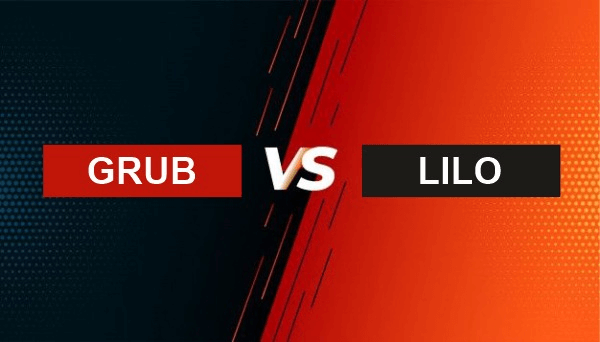Difference between GRUB and LILO in the operating systemThe boot loader is a type of program which helps to load the OS when the system is turned on. Usually, boot loaders allow users to choose an OS to load when the computer starts up from a list of available options. Therefore, multiple OS may coexist on the same machine due to the boot loader. Two of the most widely used boot loaders today are LILO and GRUB. LILO served as the default boot loader for Linux systems for a long time, but GRUB has recently taken its place. In this article, you will learn about the difference between GRUB and LILO in the operating system. But before discussing the differences, you must know about the GRUB and LILO in the operating system. What is GRUB?GNU GRand Unified Bootloader (GRUB) is a boot loader created by the GNU project. GRUB allows the user to choose from a list of operating systems to load, allowing numerous operating systems to run on the same machine. GRUB is the default boot loader in most modern Linux distributions. GRUB may be customized dynamically since it permits changes to the configuration during boot. Users are given a simple command line interface through which they can dynamically input new boot configurations. GRUB provides several user-friendly characteristics, such as high portability, independence from geometry translation, support for many executable formats, and support for many file systems, including most UNIX systems, NTFS, VFAT, and LBA (Logical Block Address) mode. Most Linux distributions that use GRUB give a customized boot menu by leveraging its support for numerous GUIs (Graphical User Interfaces). GRUB2 is currently replacing GRUB, and GRUB has been renamed GRUB Legacy. What is LILO?LILO is a Linux boot loader found in Linux-based devices that have been one of the most widely used and oldest boot loaders. The development of LILO went via many stages. The LILO was updated or changed by three developers. Werner Almesberger worked on LILO from 1992 to 1995, John Coffman worked from 1997 to 2007, and Joachim Wiedorn has been with the project since 2000. LILO has been simplified and made easier to use due to these three developers. It only supports a single OS, which is Linux OS. It has been the default boot loader of Linux OS based devices for several years after gaining popularity from loading. Compared to GRUB, it's an outdated boot loader and lacks a graphical user interface menu option. Although GRUB is now present in most OS systems, LILO and ELILO are still incredibly popular in the modern days. LILO software has been good and dependable, keeping the propriety and operating system effectively. Key differences between GRUB and LILO in Operating System
Here, you will learn about the various key differences between GRUB and LILO in operating systems. Some main differences between GRUB and LILO in operating systems are as follows:
Head-to-head comparison between the GRUB and LILO in Operating SystemThe operating system has various head-to-head comparisons between GRUB and LILO in the Operating Systems. Some comparisons between GRUB and LILO in Operating Systems are as follows:
ConclusionIn summary, GRUB and LILO are both two boot loaders. Whether it's a GRUB or a LILO boot loader, you frequently see flaws and challenges when using or analyzing them. However, both are vital in terms of science and technology. GRUB is a complex boot loader, whereas LILO is simple and straightforward. Furthermore, GRUB supports a wide range of OS, which is a distinct advantage over LILO, which only supports Linux. Things have evolved throughout time, and user now finds it easier to live their lives. Furthermore, boot loaders were difficult and complex at first, but with time and consistent development, they were made simple to use by anyone on any device.
Next TopicDifference between Virtualbox and VMware
|
 For Videos Join Our Youtube Channel: Join Now
For Videos Join Our Youtube Channel: Join Now
Feedback
- Send your Feedback to [email protected]
Help Others, Please Share









